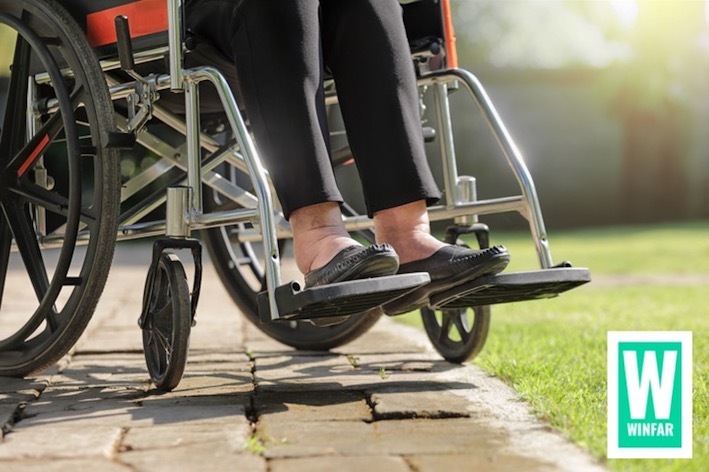Let’s discuss one of the most common aches and complaints experienced amongst the older generation. And what makes this oft-overlooked complaint, so dangerous.
WHAT IS OEDEMA?
If you experience swelling in your legs, ankles, and feet not related to an injury, it is most likely Oedema. Oedema is the build-up of fluids, in the soft tissue, most commonly in the hands, arms, legs, ankles, and feet. However, it can also affect the muscles, bowel, lungs, eyes, and even the brain.
Oedema can and does happen to everyone, at some point, but it is most common in those struggling with mobility impairments, older adults and pregnant women.
In and of itself, Oedema is not life threatening. But it is quality of life threatening – and needs to be addressed before it impacts a persons health, lifestyle, confidence, and mobility. More importantly however, what makes Oedema so dangerous is that it is symptomatic, meaning it can be a symptom of a larger problem – and not the problem in and of itself.
So, although swollen ankles are common in older people, assuming the cause as Oedema could be detrimental. We would always recommend you err on the side of caution, and consult your doctor at the first sign of a problem.
WHAT ARE THE SYMPTOMS OF OEDEMA?
- The affected area, usually the legs and ankles, appears swollen.
- The skin over the swollen area looks stretched and shiny.
- If you were to gently push into the swollen area with your finger for at least 5 seconds and then remove your finger, it would leave a dimple in the skin.
- You may have trouble walking if your legs are swollen.
- You may be coughing or have trouble breathing if you have Oedema in the lungs.
CAUSES OF OEDEMA
Oedema is often the result of long periods of immobility, especially from sitting or standing in one place for too long, where water naturally gets pulled down into your legs and feet.
A weakening in the valves of the veins in the legs which leads to varicose veins can also lead to a buildup of fluid in the legs.
Persons already struggling with mobility impairments and pregnant women are the most prone. But allergic reactions, medications, heat, and excessive consumption of foods with too much salt are common contributing factors. More seriously though…
THE REAL PROBLEM WITH OEDEMA
Because “feet swelling” is so common, and by and large not painful, it is often not taken as seriously as it should be.
And for most, Oedema can be addressed with just a few small lifestyle changes, including diet and exercise. But, Oedema can also be symptomatic of an underlying illness — most often congestive heart failure, kidney disease or cirrhosis of the liver.
As we said, consult your doctor first. Assume nothing.
There are a multitude of factors that can cause fluid to build up. And while Oedema is a common cause, it is not the only cause. And is often misdiagnosed, whilst the larger problem remains undiagnosed. Rather take the position, that any swelling is always serious!
There are more than 100 conditions that can cause swollen ankles in elderly people including heart failure, kidney disease, gout, and arthritis.
Oedema can also be a side effect of taking certain medicines. Well over 1,000 medications can cause swelling of ankles and feet in the elderly. In fact, swollen ankles are one of the most common side-effects of changing medications, from one kind to another or from changing the dosage amount of medication.
So, although swollen ankles are common in older people, never assume!
Be cautious with ankle swelling.
Do not self-diagnose.
Always have a medical professional determine the cause. Once the cause is known you can then make an informed and intelligent decision regarding how to treat the underlying condition, not just the symptom.
WHEN TO SEE A DOCTOR
If you have swelling, stretched or shiny skin, or skin that retains a dimple after being pressed (pitting) visit your doctor. if you experience shortness of breath, difficulty breathing, and chest pain take immediate action. These can be signs of pulmonary Oedema, which requires prompt treatment.
If you’ve been sitting for a prolonged period, such as on a long flight, and you develop leg pain and swelling that won’t go away, call your doctor. Persistent leg pain and swelling can indicate a blood clot deep in your vein.
OEDEMA TREATMENT
Oedema can be temporary or permanent, depending on its cause. The only way to treat Oedema is to treat the condition that is causing it.
Diuretics are a type of medication. They help get rid of excess fluid by increasing the rate of urine production by the kidneys. Different types work in different ways. A doctor will recommend a specific treatment plan for macular Oedema, pulmonary Oedema, and other types of Oedema. A person with Oedema could also try wearing compression garments and doing specific exercises to help.
If the cause is related to a medication, stopping the medication will cause the swelling to resolve. Again, talk to your doctor first before stopping any medication.
PREVENTION IS BETTER THAN …
Some self-care techniques can help reduce or prevent Oedema.
- losing weight, if appropriate
- reducing salt intake
- getting regular exercise
- raising the legs when possible to improve circulation
- wearing support stockings, which are available to purchase online
- not sitting or standing still for too long
- getting up and walking about regularly when travelling
- avoiding extremes of temperature, such as hot baths, showers, and saunas
- dressing warmly in cold weather
LIVING WITH OEDEMA
Here are some things you can do at home to keep the swelling down:
- Elevate the legs: Put a pillow under your legs when you are lying down or sitting for prolonged periods.
(Keep your legs elevated above the level of your heart.). - If you have Oedema of the legs, ask your doctor about support stockings. Support stockings put pressure on your legs to keep fluid from collecting in your legs and ankles. These may need to be specially measured and may require a prescription.
- Keep moving. Do not sit or stand for long periods of time without moving around.
- Reduce salt intake. Salt can worsen edema by promoting fluid retention. Lowering salt intake also reduces the risk of high blood pressure. So, reduce the salt and avoid processed food and takeout.
IMPORTANT: It’s important to protect any swollen areas from pressure, injury, and extreme temperatures. Injury to the skin over swollen areas takes longer to heal and is more likely to become infected.
Call your doctor immediately if you have any pain, redness, or heat in a swollen area
SIMPLE HOME EXERCISES FOR SWOLLEN FEET AND LEGS
Here are 4 simple exercises you can do at home, that will help reduce swelling in the legs and ankles.
WATCH VIDEO
“These simple exercises basically working against gravity and help the body pump fluids up from the feet and back into the trunk (center area) of the body. Once the fluid is in the upper body, it can be processed by the kidneys and eliminated in urine.
But safety first: please ensure you have your doctor’s approval before proceeding.
Moving fluid out of the legs and into the center of the body to be processed could put extra stress on an older adults system, especially if you suffer from heart or kidney conditions
* EXERCISE 1: Ankle pumps
– Lie down with your feet elevates on a pillow.
– Moving only your feet, point toes up toward the head and then point toes down away from head.
– Go back and forth.
Aim for 30 repetitions, 3 times a day. But start slowly. Don’t strain.
* EXERCISE 2: Tap the toes (in the air or on the ground) like tapping along to a song.
It might even be fun to play some toe-tapping music to make it more natural.
* EXERCISE 3: Butt squeezes
While sitting or lying down, squeeze your bum muscles. Then relax. And squeeze again.
Go slowly and try to hold the squeeze for a few seconds, then release and relax for a few seconds before the next squeeze. Make sure you don’t hold your breath. Instead, make sure you breathe through the exercise, in and out, slowly and deeply.
Aim for 10 of these squeezes, 3 times a day.
* EXERCISE 4: Single knee to chest
While lying down, bring one knee up to the chest (or as far as possible) and then return the leg to the flat position.
Keep the other leg either flat or bent with the foot on the bed to take pressure off the back.
After finishing the exercises with one leg, switch to the alternate leg.
Aim for 10 repetitions per side, 3 times a day. But again, don’t strain. Just do what you can.
DISCLAIMER: This website does not provide medical advice. This information, including text, graphics, images, and other material contained on this website is for information purposes only. No material on this site is intended to be a substitute for professional medical advice, diagnosis, or treatment. Always seek the advice of your physician or other qualified health care provider with any questions you may have regarding a medical condition or treatment before undertaking a new health regime, and never disregard professional medical advice or delay in seeking it because of something you have read on this website.
Sources:
Edema: Causes, Symptoms & Treatment my.clevelandclinic.org
What Is Edema? – Causes and Treatment | familydoctor.org
Caring for a Senior With Edema – AgingCare.com www.agingcare.com
https://www.mayoclinic.org/diseases-conditions/edema/symptoms-causes/
https://www.medicalnewstoday.com/articles/159111#what-is-edema

